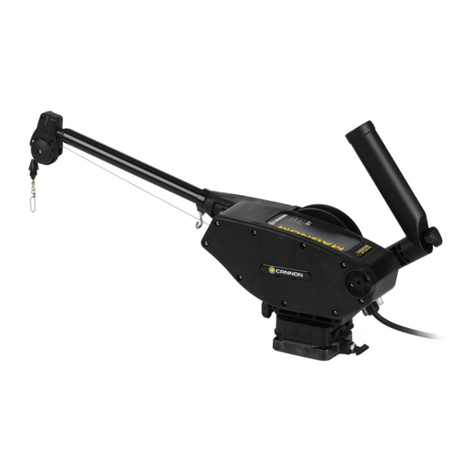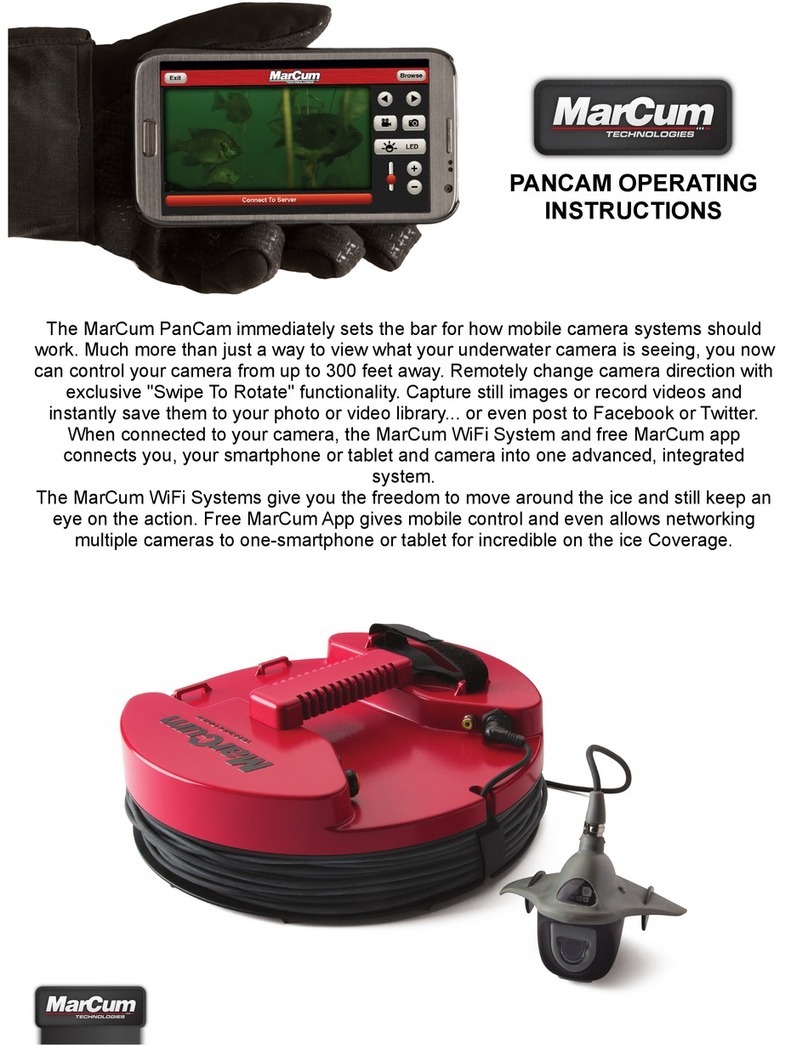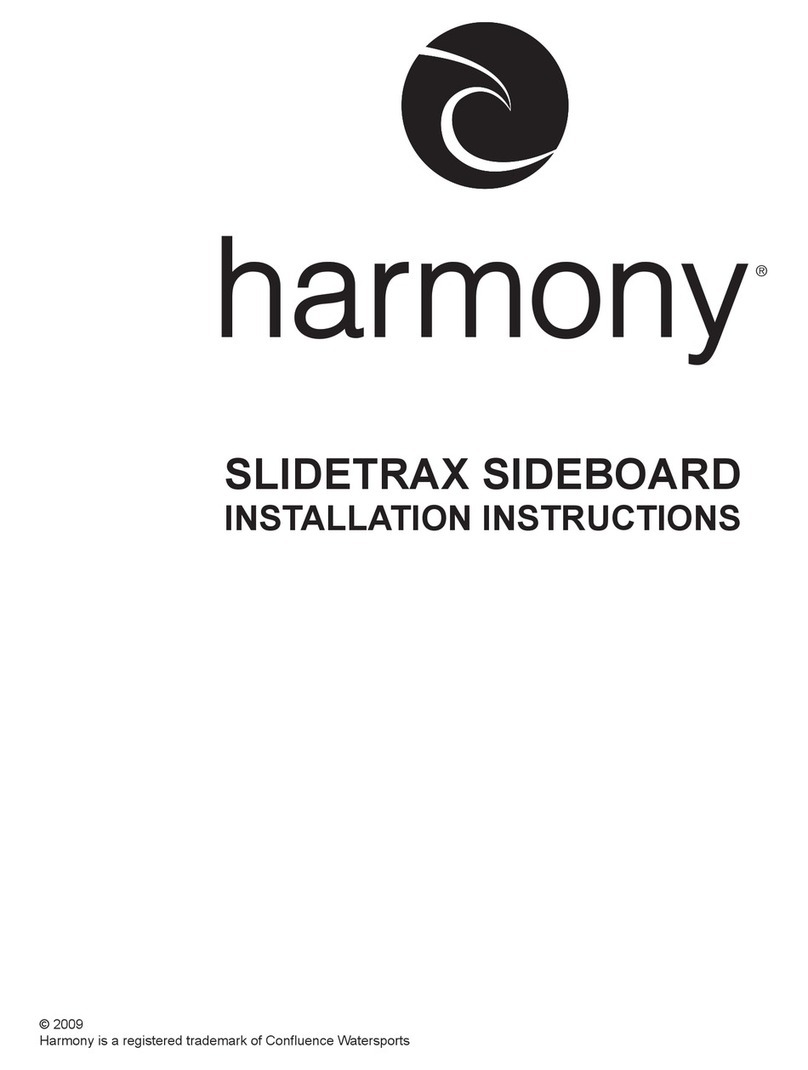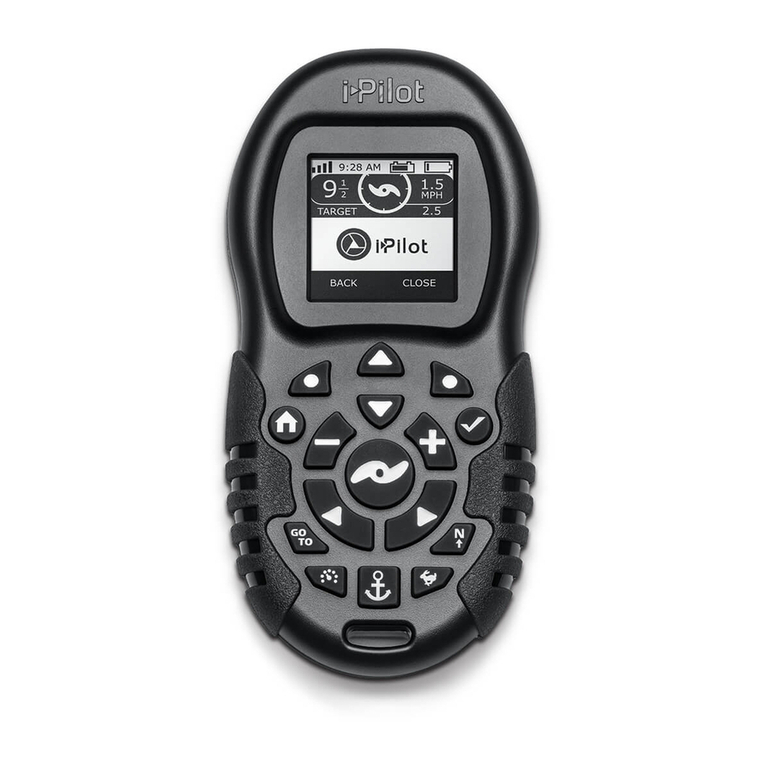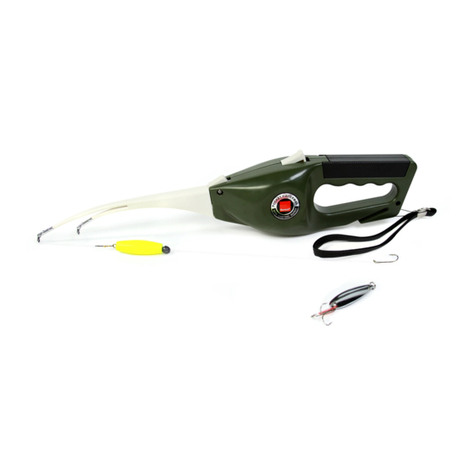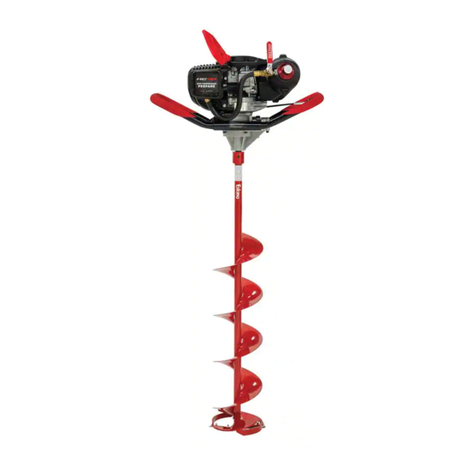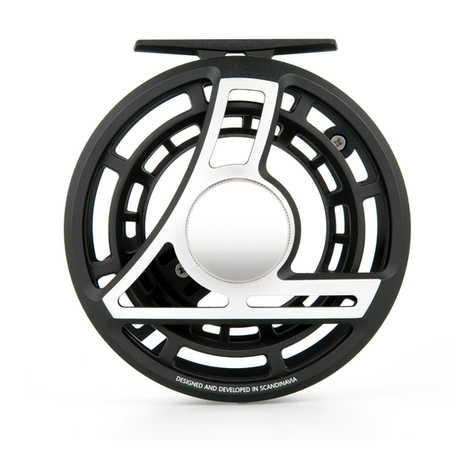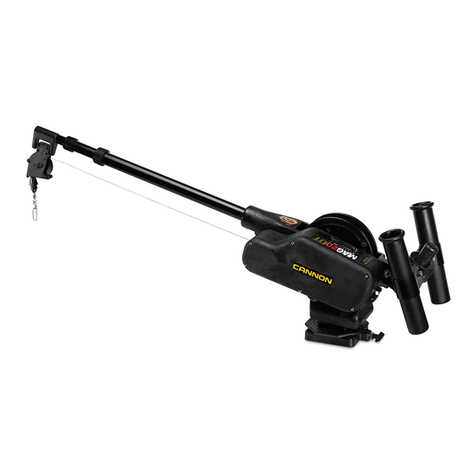Spike-It Color-C-Lector User manual

SPIKE-IT OUTDOORS, INC.
P.O. BOX 147
BROOKLET, GA 30415
To see our complete line of Spike-It products, please
visit our website:
www.ispikeit.com
Congratulations on your purchase of the COLOR-C-
LECTOR®! This revolutionary fishing instrument will allow
you to select the right lure color or combinations of colors to
match every fishing condition in freshwater or saltwater and
for all species of gamefish.
The COLOR-C-LECTOR®tells you which colors fish
can see best so you can select the right lure color the first
time, with confidence!
HOW COLOR AFFECTS FISH
Color vision is extremely important to the life of a fish. Fish
rely on color vision for food selection, for signals on mating
behavior, for shelter and self-defense. Scientific research
has proven that fish have excellent color vision. They can
distinguish all colors in the electro-magnetic spectrum, i.e.,
violet to red. They can also readily distinguish between
closely related colors and even between shades of the same
color. The major functions of a fish’s eye are to receive,
resolve, and respond to light and transmit that information to
the brain. The fish’s eyes detect movement, form and color
and sight is their dominant sense for seeking food.
The photo sensory cells in a fish’s retina are
composed of cones (for color vision) and rods (for black,
white, and shades of grey.) Because of their anatomy, a
fish’s eye can receive five times more light than the human
eye, thus allowing the fish to distinguish shapes,
movements, sizes and colors that the human eye cannot.
Fish can do this under varying water clarity and lighting
conditions.
ASSEMBLING YOUR COLOR-C-LECTOR®
Using a tape measure, peel and wrap number decals on the
probe cable at one-foot increments for the first five feet, and
five-foot increments for the remaining portion, indicating the
number of feet to the probe from that point. The cable coils
on a spool that is part of the meter assembly, and the probe
itself is stored in the slot on the back of the instrument.
BATTERY INSTALLATION
Remove the probe from the storage slot of the unit. Using a
Phillips head screwdriver, remove the six crews, along the
edge of the unit. Gently separate the top and bottom parts
of the unit. If the wire harness detaches from the unit,
simply put it back in the slot before reassembly. Place the 4
(AA) batteries in the battery compartment as indicated and
reassemble the unit. Avoid over tightening the screws.
DETERMINING WHICH COLOR BAND TO USE
The key to successful use of the COLOR-C-LECTOR®is
determining which of the three major color bands to read.
The process is easy and is determined by the probe. Lower
the probe slowly into the water, observing the depth by the
foot marker line at the water’s surface. If you lose sight of
the probe within the first two feet, read the muddy water
band, if you can see the probe beyond two feet down to four
feet, read the stained water band. If you can see the probe
at greater than four feet deep, read the clear water band.
NOTE: Under certain environmental conditions, the water
clarity may change with depth. For example, you may find
that the water is stained from the surface to 20 feet, but
becomes muddy at depths greater than 20 feet. In certain
large bodies of water the water may be clear down to 40 feet,
but becomes stained at depths greater than 40 feet. At certain
times of the year, especially the spring, rivers or streams
draining into lakes often carry sediment that is either stained
or muddy. Because of the suspended sediments, the water is
heavier or denser and will settle or entrain across the bottom
or deeper sections of the lake. This situation can be detected
by a sudden drop in the number on the COLOR-C-LECTOR®
as a result of the lack of light penetration. When this
phenomenon is detected, read the next lower color band and
determine the colors most visible to the fish. For example, if
the number indicated fluorescent orange (V) in clear water and
suddenly drops to (Y) you have probably entered into a zone
of stained water. Observe the number indicated on the
stained band and change to yellow-orange (U).
USING YOUR COLOR-C- LECTOR®
Once you have determined which of the three major color
bands to read, lower the probe to the depth you believe is
being used by active fish and read the color number. For
example, if you plan to use a jig-and-pig or soft plastic bait
along a tree or brush line in water six feet deep, drop the
probe to six feet and read the color or combinations of colors
on the appropriate color band. If you are throwing a crank bait
that will dive to eight feet, lower the probe to that depth and
match the colors. When trolling, select the depth (if using
downriggers) and drop the probe of the COLOR-C-LECTOR®
to the same depth to obtain the most visible colors. If you are
fishing a lure on the surface (top water bait) or more shallow
than three feet (example, spinner bait) use the colors indicated
at three feet deep on the correct color band, i.e., clear,
stained, or muddy. However, if the water is less than three
feet deep, drop the probe to the bottom and read the colors.
NOTE: When placing the probe on the bottom, do not allow
the probe to rest on its side, rather, lift up the cable slightly so
that only the tip of the probe touches the bottom.
SELECTING LURE COLORS
Once you have determined which color band to read at which
depth, allow the number to stabilize. Remember, that on each
major color band there are 26 colors, 20 basic or non-
fluorescent colors and directly to the left are six fluorescent
colors. It is very important to understand that the COLOR-C-
LECTOR®will tell you which non-fluorescent and which
fluorescent colors are most visible to the fish at that particular
water depth, water clarity and time of day. In fact view the
COLOR-C-LECTOR®as an instrument that will provide you
with information for both non-fluorescent or fluorescent colors!
Once the number stabilizes, you can select either the basic
non-fluorescent color or the fluorescent color- both color types
will be highly visible to the fish at that particular time and set of
environmental conditions.
NON-FLUORESCENT COLOR SELECTION
To select the proper non-fluorescent color(s), observe where
the number stabilizes at a specific water depth on the
appropriate color band (clear, stained, or muddy). The color
that the number matches on the proper major color band will
be the most visible non-fluorescent color to the fish under
those specific fishing conditions. However, the colors on one
color block on either side of the number will also be highly

visible to the fish. For example, if the color indicated is non-
fluorescent gold on the muddy band, gold will be a very
effective color to use, but you can use either non-fluorescent
red or green and present colors that will also be highly
visible to the fish under those same fishing conditions. The
COLOR-C-LECTOR®allows the fisherman to be extremely
innovative in selecting the proper color and/or combinations
of colors that will be most visible to the fish at that particular
time of day, depth of water and water clarity.
FLUORESCENT COLOR SELECTION
Placed to the left of the three major color bands are six
fluorescent colors (green, blue, orange, yellow-orange,
chartreuse, and red-orange). After you have determined
which color band to read at an appropriate depth, allow the
number to stabilize. The color that the number matches will
be the most visible fluorescent color to the fish under those
specific conditions. If the color indicated is in the center of
the fluorescent colors, that color will be extremely visible to
the fish. However, if the color indicated is near the junction
of two fluorescent colors, example blue and chartreuse, a
multi-colored SPIKE-A- DELIC bait, with the two fluorescent
colors will be very effective.
COMMON MISTAKES
1. Make sure you read the clarity of the water
accurately. Using the wrong color band will give
you the wrong color selection.
2. Do not allow your boat to shade the probe when
you’re fishing in direct sunlight. Light penetration
is vital in determining the color.
3. Check the COLOR-C-LECTOR®at least five times a
day, early morning, mid-morning, noon, mid-
afternoon, and late evening. If you move locations,
check each new location. Also, if you encounter
different colored water or change the depth you
are fishing, check for the most visible colors.
4. If you’ve been catching fish on particular color for
a period of time and they suddenly quit biting,
recheck the COLOR-C-LECTOR®. Some subtle
changes in light penetration or water clarity may
have affected the fish’s ability to see that
particular color…and if they can’t see it they can’t
strike it.
COMBINING FLUORESCENT AND
NON-FLUORESCENT COLOR SELECTION
The COLOR-C-LECTOR®provides you information on both
non-fluorescent and fluorescent colors most visible to the
fish under all types of fishing conditions. With this
information, one can combine non-fluorescent and
fluorescent colors for your selection of lures. When using
this approach to lure color selection, it is extremely important
to observe closely the number indicated on the appropriate
major color band. For example, if you are fishing in muddy
water and the color indicated is in the center of non-
fluorescent gold, the fluorescent color above gold on the
muddy band is chartreuse. However, if the number
indicated is centered on non-fluorescent gold and only at the
end or periphery of the fluorescent color chartreuse, gold
would be the most highly visible color, although chartreuse
would also be visible. If the number indicates non-
fluorescent green on the muddy band, the number would
also be centered on the fluorescent chartreuse color. In this
case, chartreuse would be the most visible, although shades
of non-fluorescent green would also be visible to the fish.
To combine the fluorescent and non-fluorescent colors,
select a lure with the combined colors, for example a spinner
bait with chartreuse and shades of green on either the
blade, head or skirt, or a multi-colored SPIKE-A-DELIC bait.
CAUTION:
Do not expose the COLOR-C-LECTOR® to direct sunlight for
extreme periods of time, and do not get water inside the unit.
Keep the COLOR-C-LECTOR® probe stored properly in the slot
in the back of the unit, avoiding direct sunlight when not in use.
Do not stretch the cable forcibly. Excessive stretching/ pulling
may damage the cable internally and cause malfunction
NOTE: Equipped with new battery saving switch.
(The switch automatically turns the unit off after 2 minutes.)
LIMITED ONE – YEAR WARRANTY
SPIKE-IT warrants this unit to be free from defects in material or
workmanship for a period of one year from the date of purchase.
During such one-year period, upon return of the unit, postage
prepaid to: 102 Railroad St. / P.O. Box 147, Brooklet, GA 30415,
along with dated proof of purchase, SPIKE-IT shall repair or
replace, at its option, the defective unit. SPIKE-IT shall not be
liable in any respect under this one-year warranty if the unit has
been repaired by others, or has been damaged by addition or
alteration of the unit, or otherwise misused or damaged in any
way. Damage that is determined to be of this nature will be
repaired at the consumer’s expense. There are no other
warranties expressed or implied. SPIKE-IT shall not be liable for
any consequential damages except to the extent required by
law.
TO RETURN MERCHANDISE UNDER WARRANTY:
1. The complete unit should be returned.
2. The unit should be packaged carefully to prevent
shipping damage.
3. Return address must be printed on the package.
4. Explanation of the problem, and dated proof of
purchase, must accompany the returned merchandise.
5. The package must be insured by the consumer.
SPIKE-IT will not be responsible for shipping damages.
NOTE: If dated proof of purchase is not provided, the unit
will be handled as a return for service.
FOOT MARKER LABEL APPLICATION:
1. Measure from top of probe to corresponding label
length.
2. Apply label beginning with number (white) part of
label.
3. Continue wrapping label around cord, ending with
clear part covering number.
OWNER’S MANUAL
COPYRIGHT 2004 DR. LOREN G. HILL
COLOR-C-LECTOR®IS AREGISTERED TRADEMARK OF
DR. LOREN G. HILL AND IS LICENSED BY
SPIKE-IT OUTDOORS, INC.
SPIKE- IT OUTDOORS, INC.
102 RAILROAD STREET / P.O. BOX 147
BROOKLET, GA 30415
www.ispikeit.com
Popular Fishing Equipment manuals by other brands
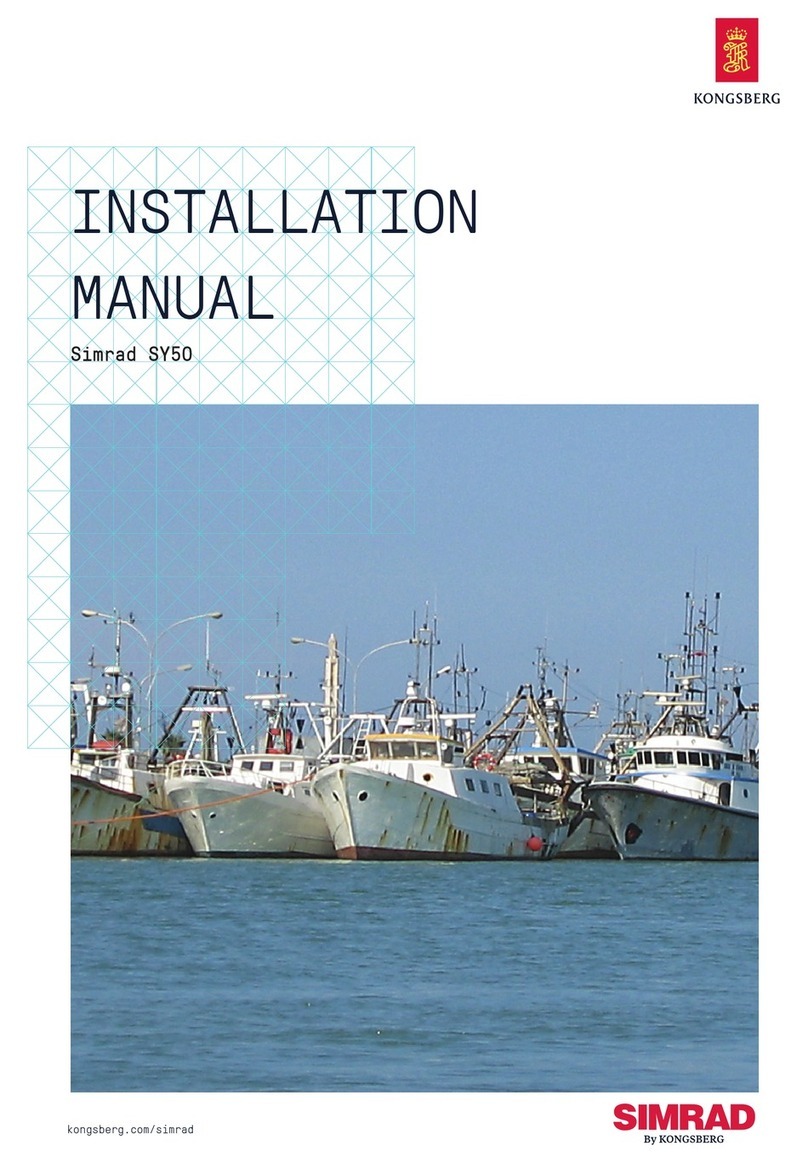
Kongsberg
Kongsberg Simrad SY50 installation manual
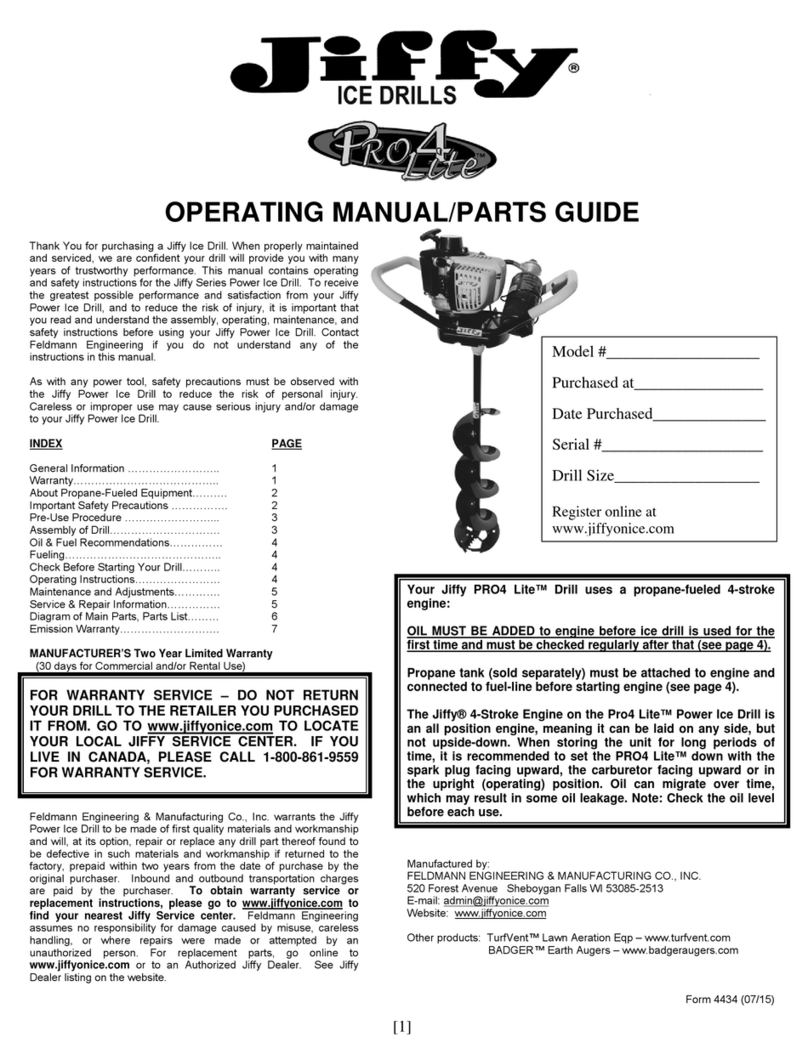
Jiffy
Jiffy Pro4 Lite Operating manual/parts guide

Fishmaster
Fishmaster Pro Series Installation instructions and owner's manual
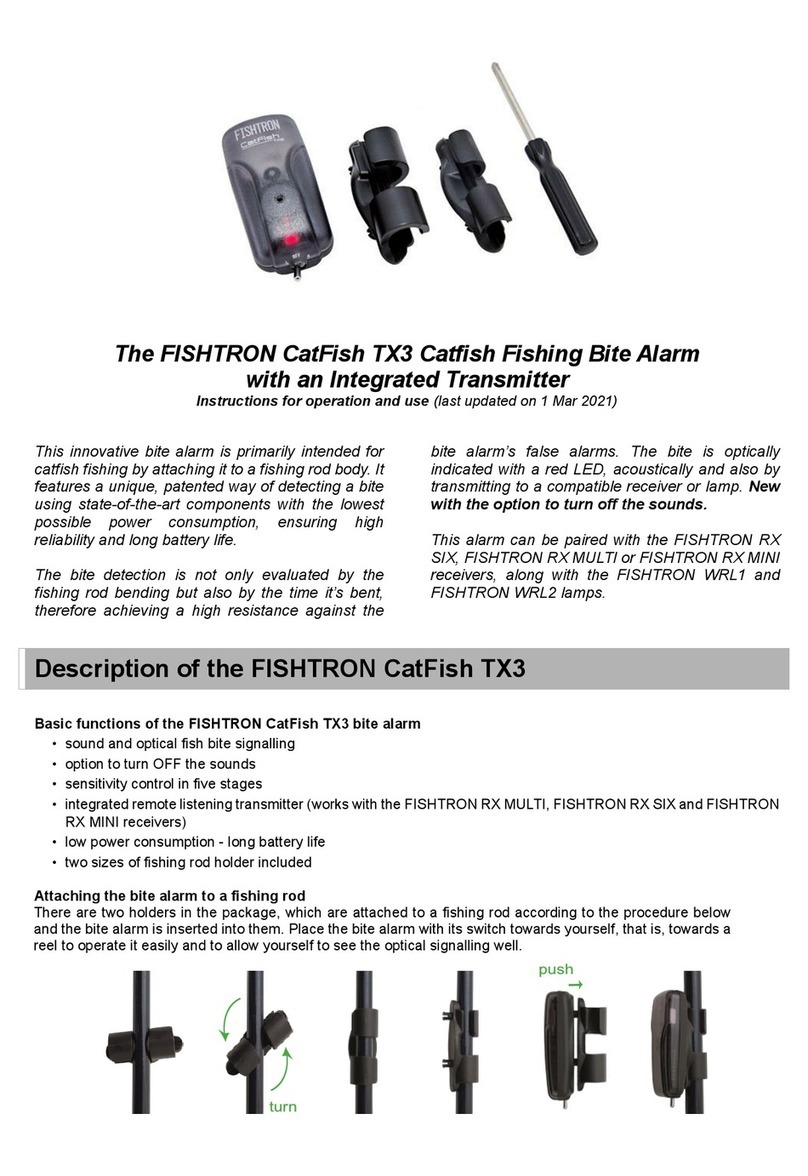
FLAJZAR
FLAJZAR FISHTRON CatFish TX3 Instructions for operation and use

Milwaukee
Milwaukee 2873-20 Operator's manual
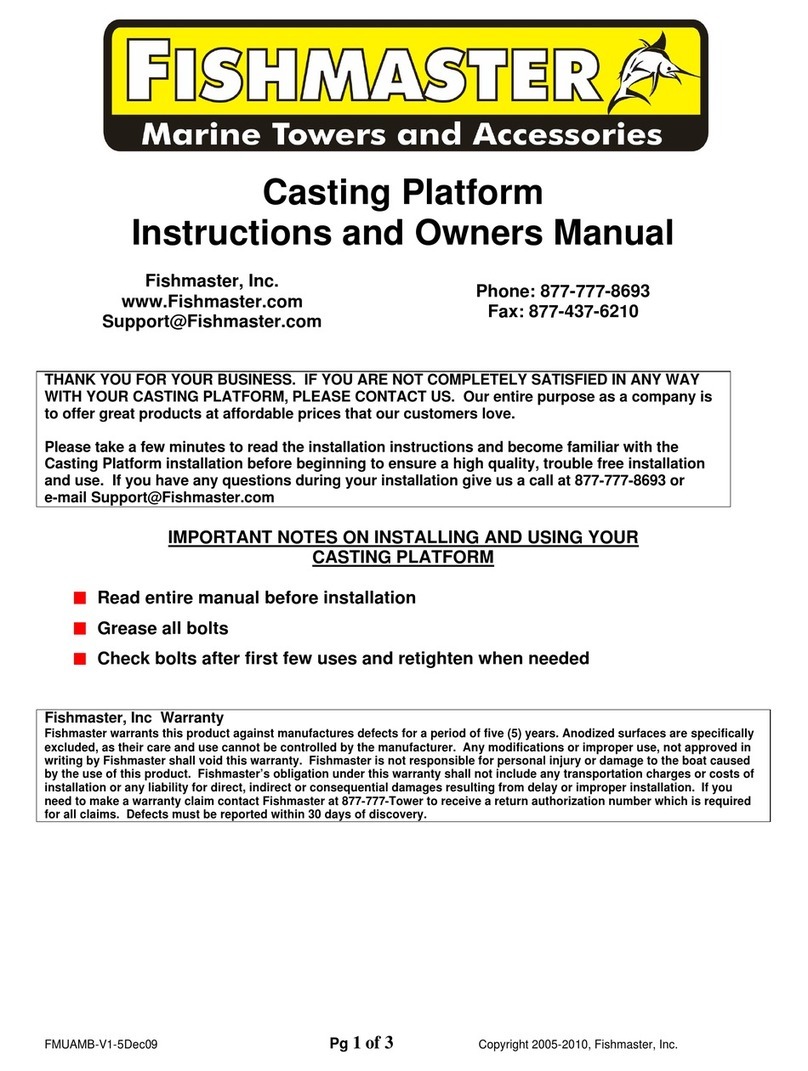
Fishmaster
Fishmaster Casting Platform Instructions and owner's manual
